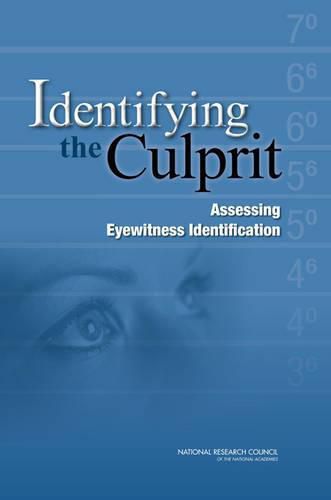Readings Newsletter
Become a Readings Member to make your shopping experience even easier.
Sign in or sign up for free!
You’re not far away from qualifying for FREE standard shipping within Australia
You’ve qualified for FREE standard shipping within Australia
The cart is loading…






Eyewitnesses play an important role in criminal cases when they can identify culprits. Estimates suggest that tens of thousands of eyewitnesses make identifications in criminal investigations each year. Research on factors that affect the accuracy of eyewitness identification procedures has given us an increasingly clear picture of how identifications are made, and more importantly, an improved understanding of the principled limits on vision and memory that can lead to failure of identification. Factors such as viewing conditions, duress, elevated emotions, and biases influence the visual perception experience. Perceptual experiences are stored by a system of memory that is highly malleable and continuously evolving, neither retaining nor divulging content in an informational vacuum. As such, the fidelity of our memories to actual events may be compromised by many factors at all stages of processing, from encoding to storage and retrieval. Unknown to the individual, memories are forgotten, reconstructed, updated, and distorted. Complicating the process further, policies governing law enforcement procedures for conducting and recording identifications are not standard, and policies and practices to address the issue of misidentification vary widely. These limitations can produce mistaken identifications with significant consequences. What can we do to make certain that eyewitness identification convicts the guilty and exonerates the innocent? Identifying the Culprit makes the case that better data collection and research on eyewitness identification, new law enforcement training protocols, standardized procedures for administering line-ups, and improvements in the handling of eyewitness identification in court can increase the chances that accurate identifications are made. This report explains the science that has emerged during the past 30 years on eyewitness identifications and identifies best practices in eyewitness procedures for the law enforcement community and in the presentation of eyewitness evidence in the courtroom. In order to continue the advancement of eyewitness identification research, the report recommends a focused research agenda. Identifying the Culprit will be an essential resource to assist the law enforcement and legal communities as they seek to understand the value and the limitations of eyewitness identification and make improvements to procedures.
$9.00 standard shipping within Australia
FREE standard shipping within Australia for orders over $100.00
Express & International shipping calculated at checkout
Eyewitnesses play an important role in criminal cases when they can identify culprits. Estimates suggest that tens of thousands of eyewitnesses make identifications in criminal investigations each year. Research on factors that affect the accuracy of eyewitness identification procedures has given us an increasingly clear picture of how identifications are made, and more importantly, an improved understanding of the principled limits on vision and memory that can lead to failure of identification. Factors such as viewing conditions, duress, elevated emotions, and biases influence the visual perception experience. Perceptual experiences are stored by a system of memory that is highly malleable and continuously evolving, neither retaining nor divulging content in an informational vacuum. As such, the fidelity of our memories to actual events may be compromised by many factors at all stages of processing, from encoding to storage and retrieval. Unknown to the individual, memories are forgotten, reconstructed, updated, and distorted. Complicating the process further, policies governing law enforcement procedures for conducting and recording identifications are not standard, and policies and practices to address the issue of misidentification vary widely. These limitations can produce mistaken identifications with significant consequences. What can we do to make certain that eyewitness identification convicts the guilty and exonerates the innocent? Identifying the Culprit makes the case that better data collection and research on eyewitness identification, new law enforcement training protocols, standardized procedures for administering line-ups, and improvements in the handling of eyewitness identification in court can increase the chances that accurate identifications are made. This report explains the science that has emerged during the past 30 years on eyewitness identifications and identifies best practices in eyewitness procedures for the law enforcement community and in the presentation of eyewitness evidence in the courtroom. In order to continue the advancement of eyewitness identification research, the report recommends a focused research agenda. Identifying the Culprit will be an essential resource to assist the law enforcement and legal communities as they seek to understand the value and the limitations of eyewitness identification and make improvements to procedures.